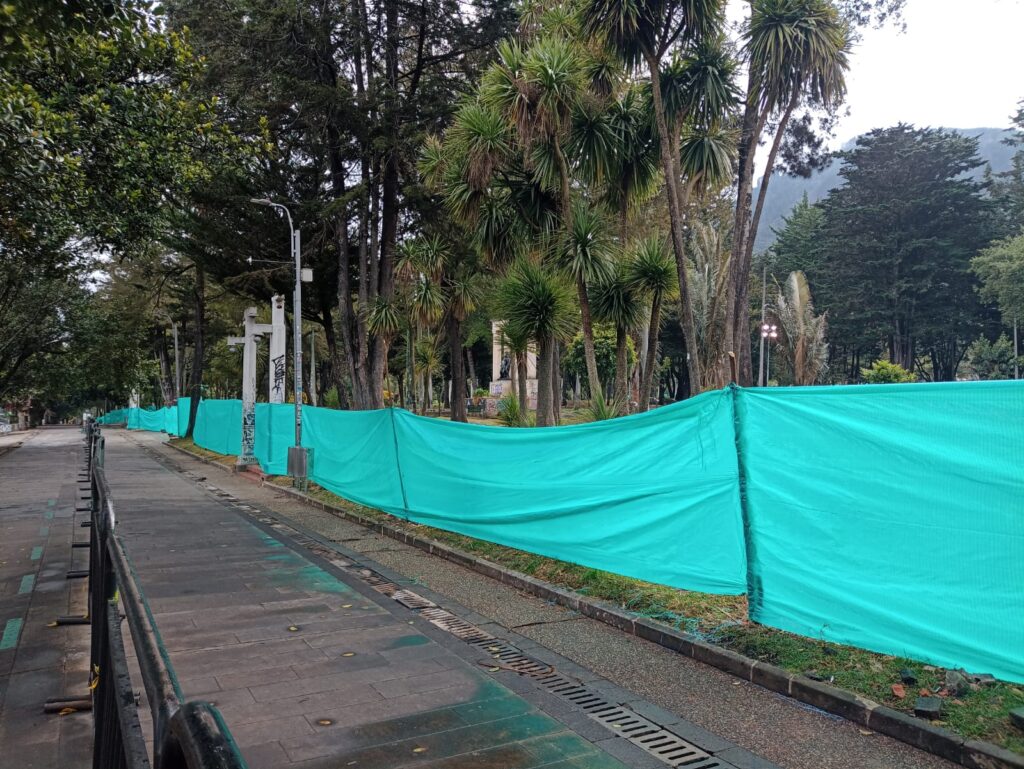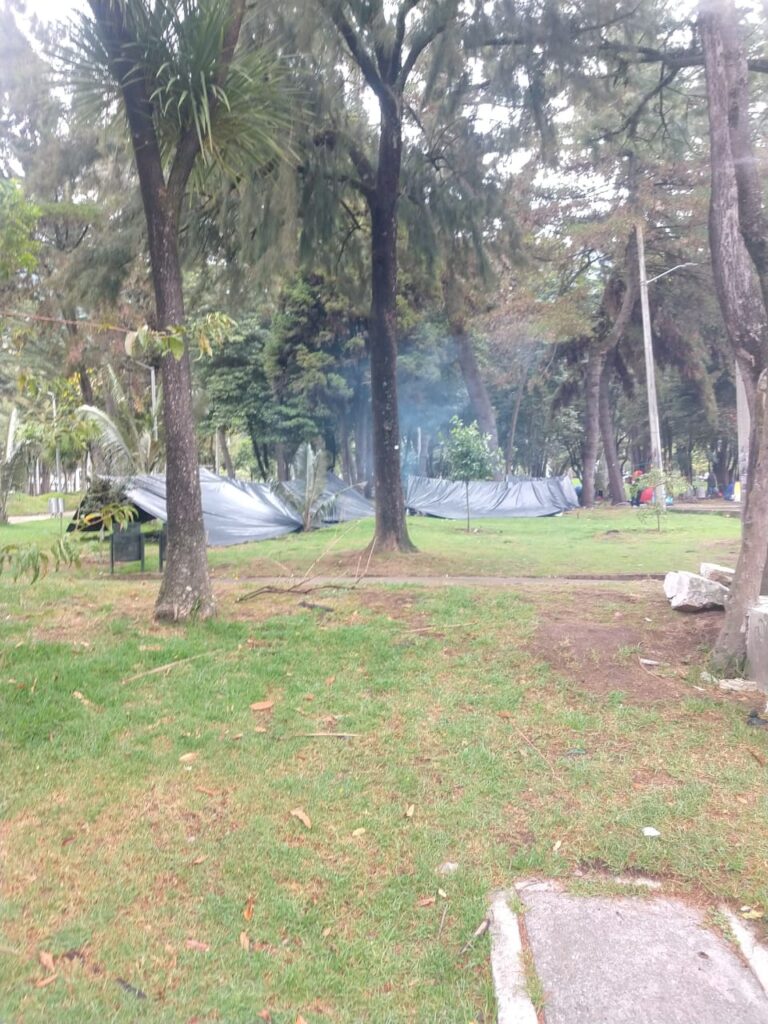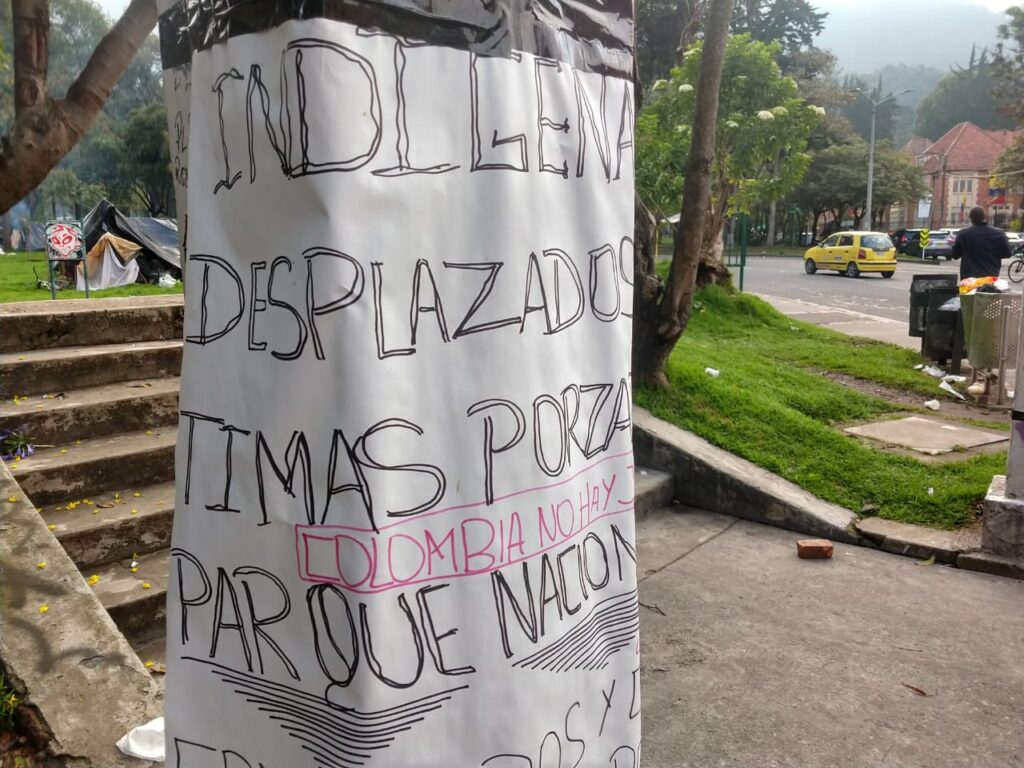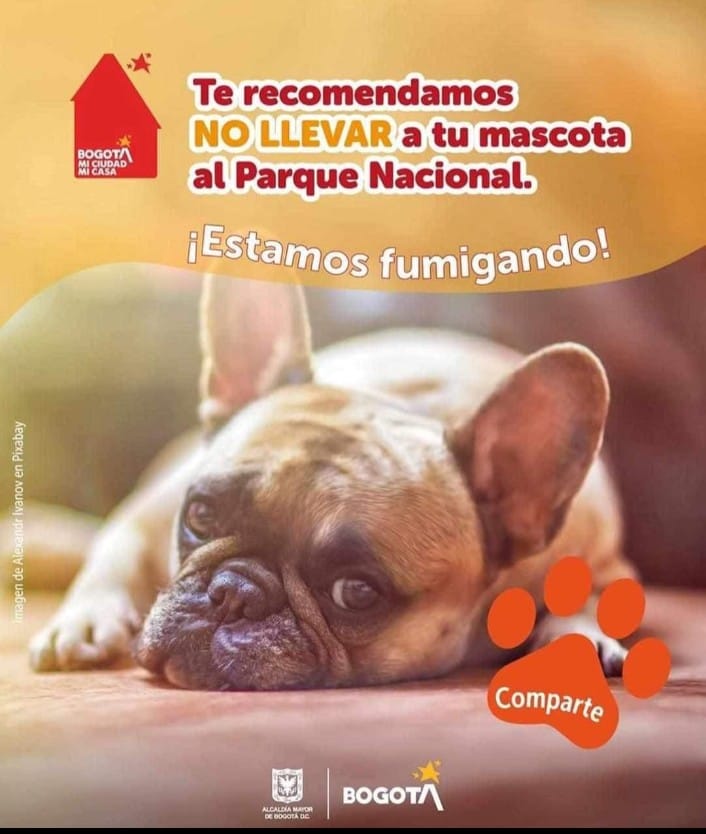The largely Embera population that had been encamped in the Parque Nacional in the centre of Bogotá have left the city, leaving the park scarred. This has been a massive problem for all concerned.
For just shy of a year, the Parque Nacional in Bogotá was home to a community of Embera Indigenous Colombians, displaced from their ancestral territories in the north of the country. This weekend, they departed once more, closing another chapter in a story that has many losers and few winners. Where do we go from here, and can this end well?

Most heartbreaking and prominent among the victims are the babies that have died in the squalid camp conditions. Dozens more children had to have medical treatment due to the dangerously unsanitary surroundings they were living in.
The camp was full of a great many highly vulnerable people, mainly children but also women at risk of domestic violence or forced to beg on the streets. Video footage of an abusive male partner against a young woman outraged many in the city, as did pictures of children placed in stocks as punishment.

This was no place for anyone to be living. Fresh water was another problem and plumbing non-existent. Instead, the Río Arzobispo took its place, turning it quite literally into an open sewer in the heart of the city.
Domestic animals lived cheek by jowl with the humans, creating further issues for sanitation and of course there was no rubbish collection, instead simply piling up until the district could get it collected. This meant an infestation of vermin throughout the park’s surrounds.
The community as a whole were given less support than they could have been. After all, this is not a group of people that wanted to come to Bogotá. They were forced out of their homelands and given little viable other options than migrate to the big city.
Once there, they found themselves largely locked out of the city’s support systems. Access to the internet is limited for many in the camp, with electricity, too, largely absent. This makes it hard to get in touch with officials via their websites, chatbots and email addresses – critical for accessing a now largely digitised system.
Bogotá residents, too, had a much-needed green space in the centre of the city blocked off for months. The park is a vital centre for sports and recreation in the east of the city, serving barrios such as La Perserverancia and Paraíso alongside Chapinero Alto. Last year’s Christmas fair was called off, a blow to the small vendors for whom those weeks are lucrative.
While there is limited support for the adults, children are a legal responsibility of local government. The district services were run off their feet – the cost of medical interventions and educational support alone was around COP$18bn. This is a strain on a city already creaking at the seams in terms of providing for its citizens.
What happens next?

This is part of a larger pattern, both of displacement in general and specifically related to Embera communities in Bogotá and the Parque Nacional. From 2021 to 2022 there was a previous occupation of the park as well as in other sites in the city, most notably in Parque Florida on the northwestern fringes of the city.
It speaks volumes to the ongoing problems that displacement causes as well as to the sheer scale of the issue. Despite peace being signed in 2016, conflict continues to rage around the country. Illegal mining and deforestation exacerbates the issue, with regulation lightly applied if at all.
While the national government via la Unidad de Victimas has given the community guarantees for their safe return to their hinterlands, they are absolutely justified in wondering if the state will deliver on its promises. It’s entirely possible that this will all collapse again and we will see another prolonged encampment in the park.

In terms of the park itself, the clean-up project is immense. Over 40 tonnes of rubbish have been sent to the dump and the park is being fumigated to drive out the scores of rats and insects that lived off the camp. You are advised to avoid the zone and not take animals there.
That’s just the start, though. It will take weeks and months for the soil and grass to recover and regrow, years and decades for the effects of cutting down saplings to be seen. Damaged monuments and fixtures will need to be repaired and repainted – a hard job with the rainy season looming and La Niña on the horizon.
The recently elected Bogotá mayor, Carlos F Galán, is advising citizens to avoid the park for the next two months and that he will carry out works parallel to the cleanup project, so that after reopening there will be better security and lighting. Hopefully those won’t be mere words that dissolve in the cold November rains but concrete realities.
After all, at the end of this whole debacle, there has been a lot of disruption and suffering on all sides and very few answers or positive outcomes. For now, all we can do is cross our fingers and hope. First, that the Indigenous community will find a new long-term home and secondly that Bogotá can have its emblematic Parque Nacional as a point of pride once more.





